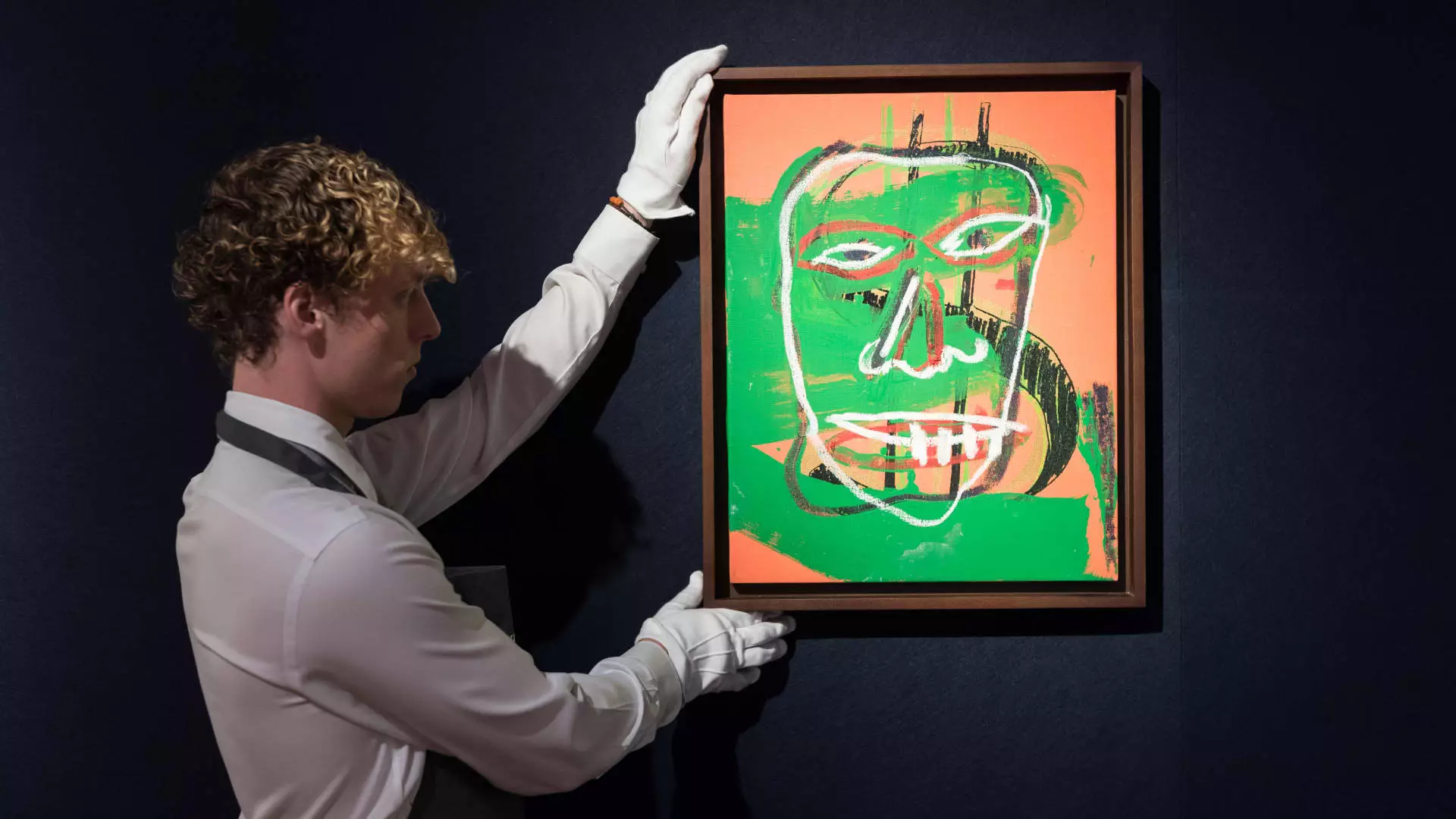The global art market is currently experiencing a period of contraction, marking its second consecutive year of decline. According to a recent survey conducted by Art Basel and UBS, there is a notable drop in demand for high-end art pieces, with a significant shift in preference towards more affordable artworks, particularly among younger collectors. This trend poses questions about the sustainability of the market and the preferences of the new wave of art buyers entering the scene.
The first half of 2024 has witnessed a staggering 26% decrease in auction sales at prominent auction houses such as Christie’s, Sotheby’s, Phillips, and Bonhams, compared to 2023 figures. Moreover, these numbers reflect a 36% reduction from the peak market performance observed in 2021. This downturn is emphasized by a related finding: the proportion of wealthy collectors expressing intentions to purchase art within the upcoming year has dropped to 43%, down from over half of those surveyed in 2023. A significant finding includes that 55% of collectors now plan to sell their art, indicating a troubling trend where sellers outnumber prospective buyers.
Amid this economic downturn, it is crucial to analyze the shifting demographics among art collectors. Insights from the survey suggest a generational divide, with younger, more budget-conscious collectors—primarily from Gen X and millennial cohorts—taking center stage. These younger collectors tend to favor modern, lower-priced pieces rather than the expensive trophy artworks traditionally favored by their older counterparts. The approach of Gen X collectors, who were reported to have an average spending of around $578,000 in 2023, signifies a crucial demographic in the collectibles market, outpacing both millennials and older generations in their average expenditure.
Despite the adverse market indicators, there remains a surprising level of optimism among collectors. A remarkable 91% of affluent collectors expressed a positive outlook for the art market over the next six months—a notable increase from 77% recorded at the end of 2023. This optimism slightly surpasses collected sentiments regarding the stock market, with only 88% of wealthy investors feeling positive about it. However, this confidence appears to be somewhat detached from the underlying economic realities that are leading to spending slowdowns and reduced purchasing intentions.
The interplay of geopolitical tensions—especially in relation to the Middle East and Ukraine—combined with broader economic weaknesses in Europe and China, has significantly undermined buyer confidence in the art sector. Increased interest rates further complicate the situation by elevating opportunity costs for collectors, prompting them to consider other investment routes that promise easier financial returns. These factors represent critical obstacles that art dealers and auction houses must navigate in the coming months.
As established collectors face a demographic shift, many are deciding to downsize their collections. This trend involves divesting lower-value pieces, while retaining only those deemed worthwhile for their investment or personal value. This is indicative of a transitional phase in the art market: a strategic shift towards more value-driven, curated collections amidst an oversupply of high-priced Impressionist and Abstract works that have seen a decrease in demand.
An additional layer of complexity in the art market concerns legal issues affecting transactions, such as the rise of counterfeit art and restitution cases. The survey revealed that 52% of affluent collectors regard these “barriers to the free movement of art internationally” as a critical concern. Furthermore, ethical considerations regarding artists’ compensation and promotion are becoming more prevalent in discussions, leading to calls for transparency and accountability in the art trade.
An impending transfer of wealth from older generations to younger ones presents both challenges and opportunities for the art market. The notion of a “great art transfer” looms large, with a significant portion of wealthy collectors likely to inherit art pieces. Data indicates that 91% of affluent individuals surveyed owned inherited artwork, and while many express intentions to hold onto these pieces, a significant number would consider selling due to practical constraints, such as space or tax implications.
As the art world braves these unpredictable currents, it is evident that value perceptions, demographic considerations, and economic realities are fundamentally shaping its future. Collectors are likely to navigate a landscape that is not solely defined by monetary value but rather by personal engagement, cultural significance, and evolving preferences. Understanding these dynamics will be essential as art dealers and auction professionals strive to create strategies that resonate with both established and emerging collectors in the years to come.

